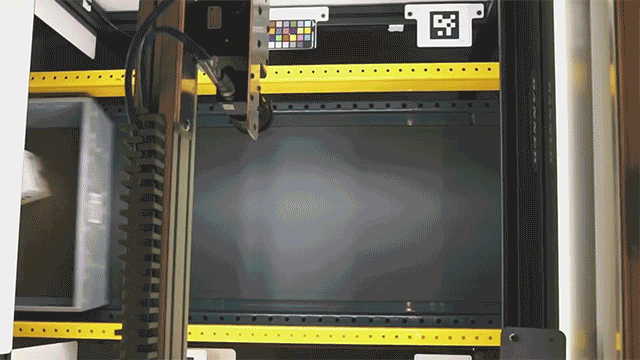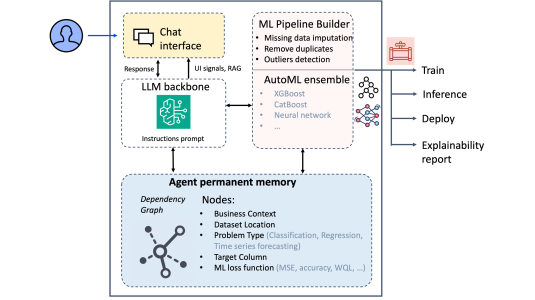It’s September. You’re a toy seller using Fulfillment by Amazon (FBA) and most of your sales come right before the holidays. However, this summer you overstocked, which degraded the health of your inventory turns, resulting in lower remaining capacity as you near the holiday season. Meanwhile, you just launched a new line of robot assembly kits that are becoming popular with customers.
How can you ensure access to additional space in Amazon fulfillment centers to set yourself up for a great Black Friday and Cyber Monday using FBA? And how does Amazon manage capacity without overbuilding space, potentially incurring costs that do not benefit customers, as well as without underbuilding space and limiting product selection, availability, and fast delivery?
The answer lies in an innovative new FBA Capacity management system, driven by Amazon’s Supply Chain Optimization Technologies (SCOT) and Selling Partners Services (SPS) teams. The new system provides most sellers with greater capacity limits, and also greater control to obtain additional capacity when they need it.
FBA is an optional service for sellers to outsource order fulfillment and customer service to Amazon. Since its launch in 2006, FBA has expanded rapidly, with selling partners ranging from family-owned snack makers to multinational high-tech companies.
FBA is an increasingly popular choice for both brands and resellers seeking to leverage Amazon's science- and technology-driven fulfillment and transportation networks. FBA provides sellers with significant cost savings and faster delivery speeds that together provide a great value for customers and sellers. The accelerated delivery speed has led to significant increases in customer demand for products, while the surge in demand, particularly during peak events such as Prime Day, Black Friday, Cyber Monday, and holidays, has created unprecedented demand for FBA capacity.
Amazon needed to find a way to match demand with available capacity while building additional capacity to meet sellers’ needs.
The capacity management challenge
Amazon’s forecasting capabilities — powered by a combination of machine learning, simulation, and optimization modeling — are well documented. Scientists have tackled research questions such as how to manage inventory for peak events and how to best distribute products across the Amazon fulfillment network for the fastest delivery.
But when it comes to managing capacity in the FBA program, even Amazon’s predictive mechanisms have limitations. FBA serves a wide breadth of independent sellers who own their inventory and make independent decisions about which products to carry, how much inventory to stock, and what prices to offer.
“There's only so much we can really understand about what sellers’ business plans are,” said Garrett van Ryzin, distinguished scientist at SCOT. “It’s fundamentally limiting to rely solely on our own predictions.”
Additionally, Amazon does not have full visibility into those sellers’ business needs or decision-making processes. This became more relevant as seller usage of FBA network capacity grew significantly within the span of a few years.
“Most of the time our predictive models allocate sufficient capacity to each seller. Yet we observed, in some situations, sellers had insufficient capacity, which impacted their ability to pursue certain growth opportunities. So we set out to design a release valve so sellers can tell us when they need more capacity for products they are confident customers will love, even if we were not predicting that they needed more space based on the data that Amazon had,” said Seamus Browne, a principal product manager on the FBA team.
To manage capacity for FBA, Amazon originally created a system that scores sellers according to how well they manage their inventory. A few weeks in advance of each allocation period, sellers are told how much capacity they will have for the next three months — a number that is based on sellers’ projected sales, and previous inventory performance (everything else equal, this number increases for sellers who use allocated space efficiently).
Our initial system worked well for managing capacity. However, we needed a new approach that could handle sellers’ current and future plans, such as a new product introduction, marketing and advertising campaigns, or other information that only sellers knew about.
“Our initial system worked well for managing capacity. However, we needed a new approach that could handle sellers’ current and future plans, such as a new product introduction, marketing and advertising campaigns, or other information that only sellers knew about,” said Özalp Özer, who is leading the FBA Science team in his capacity as director of research science.
Allocating space based on past performance and Amazon’s forecasts meant sellers who had recently underperformed with respect to sales and inventory efficiency might end up having lower leftover capacity to launch potentially popular new products or campaigns. Sellers could submit exception requests for additional capacity; Amazon was getting many such requests each quarter, and each one had to be reviewed manually.
To address that customer pain point, the Amazon FBA team created a new way for sellers to provide a simple, objective measure of how much value they could create if given additional capacity. The new tool applies economic principles to empower sellers to communicate credible needs for additional capacity.
Here is how it works: during each capacity allocation period, sellers can place requests to increase their capacity limit. Those sellers submit a “reservation fee” — the maximum fee they would be willing to pay per cubic foot to reserve additional capacity, along with their desired maximum amount of additional capacity.
Requests are granted objectively, starting with the highest reservation fee per cubic foot until all capacity available under this program has been allocated. When additional capacity is granted, sellers pay no more than their chosen maximum reservation fee. In addition, sellers receive performance credits from the sales they generate using the extra capacity — up to 100% of the reservation fee.
A different approach to capacity management
The FBA team designed the tool to optimize the value for customers who use additional capacity effectively — and not to maximize proceeds for Amazon. In fact, sellers who win more space can earn credits from the extra sales they generate, and these credits can offset the entire amount of the reservation fee.
“The mechanism is designed to reward sellers who use their additional capacity productively to generate sales,” van Ryzin explained. “We are applying economic market design principles to manage supply chain capacity, and it's the first time we've really done it at this scale within FBA.”
This new tool is inspired by earlier economic research on selling securities, where payments are based on the value generated from the asset after it is allocated, but the details posed unique challenges.
“You also need something that is simple for sellers and holds a level of fairness in its decisions,” explained Tolga Seyhan, a principal research scientist on the FBA team.
“We make sure that if you come early and you paid a high fee, you will ultimately get the same fee as someone who paid less in a later round,” said Alexandre Belloni, an Amazon Scholar from Duke University’s Fuqua School of Business who has been leading market-design-related projects. “We want to reward early requests, which helps with our capacity planning and allows sellers to better utilize the additional capacity.”
Take a theoretical example: Say a seller has a Halloween shop on Amazon and needs space for a new costume. They want 5,000 additional cubic feet (“cubes”) on top of their usual allocation of 10,000 ft3. They place a reservation fee of $6 per cube in an early round of the quarter for a total potential cost of $30,000. Their request is granted, but then the lowest reservation fee granted in subsequent rounds drops to $4 per cube. The new tool reduces the Halloween shop’s reservation fee to $4 per cube, matching the lowest reservation fee granted in the later round. Hence, the seller’s total reservation fee would be a maximum of $20,000.
As is often the case with these capacity reservations, in this theoretical example, the seller correctly forecasts that their new costume would justify the space. That extra space generates $300,000 in incremental sales. Amazon awards a 15% performance credit on the incremental sales, up to a maximum of the $20,000 total commitment. In this case, the seller has earned performance credits of $45,000, which fully offset the entire reservation fee. The seller ends up paying nothing for the additional space, and because they used the space efficiently, their capacity allocations are also likely to increase in the future.
The system was successfully launched for a small number of sellers in early 2022.
“When we launched the first experiment, we were excited to see that sellers were using this rationally and that it was helping address information asymmetry. Sellers had enough information to confidently forecast both the need and price they’d be willing to pay for additional space. As a result, the vast majority of sellers got their reservation fee back and ended up paying nothing for the additional space,” Belloni said, adding that demand for the program has increased.
“The productivity of the space allocated through this mechanism is higher than what we would get by doing the allocation ourselves, and that benefits everyone: Amazon, our sellers, and our customers,” Özer said. “Building this new system required our scientists to use state-of-the-art tools from optimization, simulation, and economics and work closely with product managers and engineers. Together we innovate on behalf of our customers and sellers around the world.”








